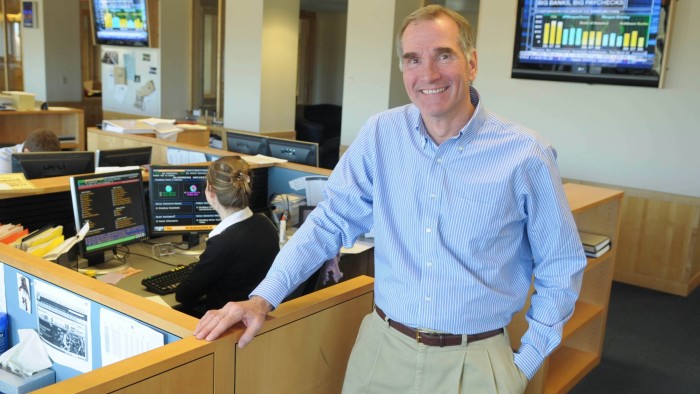Unlock the Editor’s Digest for free
Roula Khalaf, Editor of the FT, selects her favourite stories in this weekly newsletter.
The writer is former chair of the Yale Investment Committee and author of 22 books including Rethinking Investment
The late David Swensen, longtime chief investment officer for Yale University, has been rightly lauded for creating a groundbreaking pathway for successful institutional investing. His 2000 book Pioneering Portfolio Management has become a bible for many institutional investors.
It is now 40 years since Swenson’s arrival at Yale in an era in which most endowments had an 60:40 asset allocation policy — that is, 60 per cent in listed US stocks, largely “blue-chips,” and 40 per cent in high grade bonds. Swensen rejected this and set out to invest in mispriced equity assets in less efficient markets.
He realised that most investors needed to focus on assuring liquidity, but a university endowment had an unusual characteristic that could give it an important competitive advantage: Yale, already three centuries old, was the ultimate long-term investor. Thus, it could accept significant limitations on liquidity that most investors could not tolerate. Similarly, daily pricing didn’t matter to Yale. Therefore, Swensen could devote substantial parts of the portfolio to private equity and venture capital where better risk-adjusted returns could be found.
The Swensen investment model may have run its course as Burton Malkiel, the Princeton economist, has clearly explained. The heady risk-adjusted returns from alternative investments are diminishing as more money from investors flows to them, leading to more efficient market pricing.
However, the portfolio construction created by Swensen was only the most visible part of the Swensen recipe for success. There are two other aspects of the “Swensen model” that offer enduring lessons — his nurturing of in-house talent and his commitment to building win-win relationships with the investment firms chosen to manage part of the university’s endowment.
First, he “home grew” his team. Swensen realised that the people he hired would be the foundation of long-term success. Located in New Haven, Connecticut, Yale would never be an investment centre like New York or Boston. So, Swensen had to be creative.
Yale College — the undergraduate colleague of Yale — enrols more than 1,500 exceptional new students every year. Swensen decided to design and teach with his longtime colleague Dean Takahashi a hugely successful undergraduate course that annually drew the best and brightest. From those, he hired a few summer interns, with the most promising selected for permanent employment and trained by himself. Soon, Swensen had one of the most talented teams in the world of investing. It was, in effect, the Swensen school of investment management. The leaders of the Stanford, MIT, and the University of Pennsylvania endowments, as well as those at a dozen other universities, colleges and foundations, have been “graduates” of the Yale Investment Office.
Second, Swensen treated the investment managers he selected as true partners in the stewardship of the university’s endowment — not as suppliers or subcontractors. Swensen wanted to have the best investment managers so he designed the process of hiring managers by thinking from the managers’ point of view.
Conventional practice at the time was well established: institutions, often with assistance from consultants, chose three to five candidate managers to present their capabilities to an investment committee in a series of “beauty pageant” presentations. Swensen insisted on an unusually rigorous selection process. His team did extensive due diligence before inviting a manager to come to New Haven for an exhaustive set of meetings. Because of that level of preparation, Swensen also would usually tell the manager within a day or two if the firm would be recommended to the investment committee, an unusually rapid response.
Swensen did not limit engagement to the initial selection of managers; he continued to engage afterwards vigorously with managers, advising on their firms’ compensation and ownership policies, and having clear views on the growth in assets and in their organisational capacities. And every year he would invite managers for a weekend to mix with staff and students to show gratitude. In short, he saw himself as a true partner of the firms.
While many endowments “churn” managers with the average tenure being about five years, the average tenure of investment managers with Yale was well over 20 years, with many of them being chosen when the firm was first organised.
Swensen is celebrated for his pioneering approach to constructing an institutional investment portfolio. But everyone in investment management would do well to remember his focus on people and relationships in creating success for both investors and managers.


